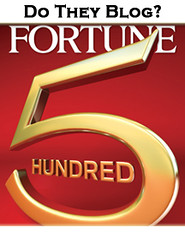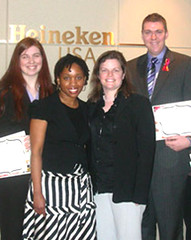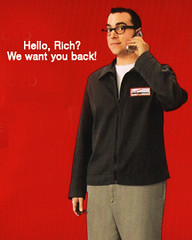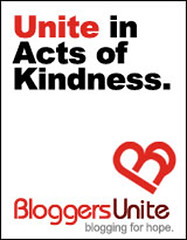Liz Fuller, who writes Business and Blogging, recently pulled together a list of Fortune 500 blogs. In sum, she found 8 percent of Fortune 500 companies had some level of corporate blogs. Two of the top ten — GM and GE — have blogs.
The GM Fastlane Blog, of course, has been sourced as a best practice staple for some time. It appeared in my first presentation on business blogs in 2005, cited for its human approach, industry insights, product updates, press rebuttals, industry passion, and responsiveness.
While Fuller meant her post to be a precursor to evaluating 41 corporate blogs — the good, the bad, and the ugly — in the weeks ahead, longtime recruiting blogger and recently named “Best Recruiting Blogosphere Personality” Recruiting Animal flipped the headline to conclude Business Blogging Flops, adding in a reference to The Guardian article that notes the one percent rule is an emerging trend.
The One Percent Rule
The one percent rule is that if you have a group of 100 people, one will create content, 10 will interact, and 89 percent will just view it. That’s about right, unless you nurture engagement.
For example, our BlogStraightTalk group has 200 members with slightly better numbers, with 10 percent helping to create content, 30 percent offering comment, 50 percent viewing it, and 20 percent never dropping by again. However, although I have been focused on other projects, encouraging engagement is by design.
Honestly, this isn’t all that much different from face-to-face organizations. Without encouraging engagement, members of any organization, regardless of where it forms, will likely follow similar behavioral patterns: 1-10 percent lead, 10-20 percent manage, 30-80 quietly participate, and the balance forgets why it joined in the first place.
There is no difference, leaving The Guardian’s information interesting, but its conclusion is invalid because it fails to draw a comparison to real life.
Business Blogs Flop?
This knowledge brings us back to the headline flip. It seems to me that blogs and other social media/new media applications are sometimes too easily dismissed as viable because the expectation is an 80-100 percent adoption rate.
This isn’t realistic. In fact, with the possible exception of business cards, I don’t believe any communication tactic —brochures, newsletters, radio, television, Web sites, etc. — has an 80 percent adoption rate. So why have we set the expectation higher for the newest communication tool on the block?
Exactly. It doesn’t make sense.
The Truth About New Media
I can no longer open any communication-related publication without reading about the application of social media. Even Communication World (CW), which is a magazine for communication management, promoted “Social Media: Extend Your Reach” on the cover of its Jan.-Feb. issue.
Given the organization that publishes CW tends to be more conservative and representative of corporate communicators than advertising agencies and maybe public relations firms, it seems to me they present an accurate picture of where business communication is headed. Much of it will be online.
Will that mean every company will have a blog? Probably not. But not every company buys a television spot either. There are virtually hundreds of ways that companies can become engaged in social media on some level. And there are dozens of ways to employ a blog to fit the specific strategic communication needs of a company.
As I’ve pointed out several times, a company might not have a formal social media program in place, but they are most certainly engaged in it whether they know it or not.
For example, Bank of America might not have a blog, but I have more than 500 network connections (the maximum number returned) to existing and former Bank of America employees and associates in my Linkedin network alone. Even more telling, a quick Google blog search on “Bank of America” reveals more than 2.7 million hits on blogs. (That’s just blogs.) Similar results turn up on the other eight companies that round out the Fortune 500 list.
Simply put, most companies are engaged in new media. Whether or not they monitor or manage their message or support a corporate blog is a different question. Because the truth is, whether they do or not, it seems painfully obvious that their customers, vendors, and employees do.

The GM Fastlane Blog, of course, has been sourced as a best practice staple for some time. It appeared in my first presentation on business blogs in 2005, cited for its human approach, industry insights, product updates, press rebuttals, industry passion, and responsiveness.
While Fuller meant her post to be a precursor to evaluating 41 corporate blogs — the good, the bad, and the ugly — in the weeks ahead, longtime recruiting blogger and recently named “Best Recruiting Blogosphere Personality” Recruiting Animal flipped the headline to conclude Business Blogging Flops, adding in a reference to The Guardian article that notes the one percent rule is an emerging trend.
The One Percent Rule
The one percent rule is that if you have a group of 100 people, one will create content, 10 will interact, and 89 percent will just view it. That’s about right, unless you nurture engagement.
For example, our BlogStraightTalk group has 200 members with slightly better numbers, with 10 percent helping to create content, 30 percent offering comment, 50 percent viewing it, and 20 percent never dropping by again. However, although I have been focused on other projects, encouraging engagement is by design.
Honestly, this isn’t all that much different from face-to-face organizations. Without encouraging engagement, members of any organization, regardless of where it forms, will likely follow similar behavioral patterns: 1-10 percent lead, 10-20 percent manage, 30-80 quietly participate, and the balance forgets why it joined in the first place.
There is no difference, leaving The Guardian’s information interesting, but its conclusion is invalid because it fails to draw a comparison to real life.
Business Blogs Flop?
This knowledge brings us back to the headline flip. It seems to me that blogs and other social media/new media applications are sometimes too easily dismissed as viable because the expectation is an 80-100 percent adoption rate.
This isn’t realistic. In fact, with the possible exception of business cards, I don’t believe any communication tactic —brochures, newsletters, radio, television, Web sites, etc. — has an 80 percent adoption rate. So why have we set the expectation higher for the newest communication tool on the block?
Exactly. It doesn’t make sense.
The Truth About New Media
I can no longer open any communication-related publication without reading about the application of social media. Even Communication World (CW), which is a magazine for communication management, promoted “Social Media: Extend Your Reach” on the cover of its Jan.-Feb. issue.
Given the organization that publishes CW tends to be more conservative and representative of corporate communicators than advertising agencies and maybe public relations firms, it seems to me they present an accurate picture of where business communication is headed. Much of it will be online.
Will that mean every company will have a blog? Probably not. But not every company buys a television spot either. There are virtually hundreds of ways that companies can become engaged in social media on some level. And there are dozens of ways to employ a blog to fit the specific strategic communication needs of a company.
As I’ve pointed out several times, a company might not have a formal social media program in place, but they are most certainly engaged in it whether they know it or not.
For example, Bank of America might not have a blog, but I have more than 500 network connections (the maximum number returned) to existing and former Bank of America employees and associates in my Linkedin network alone. Even more telling, a quick Google blog search on “Bank of America” reveals more than 2.7 million hits on blogs. (That’s just blogs.) Similar results turn up on the other eight companies that round out the Fortune 500 list.
Simply put, most companies are engaged in new media. Whether or not they monitor or manage their message or support a corporate blog is a different question. Because the truth is, whether they do or not, it seems painfully obvious that their customers, vendors, and employees do.





















